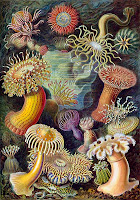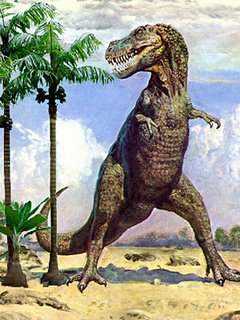 Fossils turn up in the most unusual places. Simone Casati, an amateur paleontologist, was exploring the famed vineyards of Italian winemaker, Castello Banfi, when he came across a small piece of bone poking out of the soil. He started digging and realized that he had unearthed more then he had e anticipated: a 10m (33ft) long skeleton of an ancient whale.
Fossils turn up in the most unusual places. Simone Casati, an amateur paleontologist, was exploring the famed vineyards of Italian winemaker, Castello Banfi, when he came across a small piece of bone poking out of the soil. He started digging and realized that he had unearthed more then he had e anticipated: a 10m (33ft) long skeleton of an ancient whale. I Was Supposed To Go See James Watson Talk Today ...
I Was Supposed To Go See James Watson Talk Today ......and quite frankly I am pretty pissed off that his lectures have been cancelled. James Watson...
 Twins: Identical, Mirror Images, Fraternal And Chimeras
Twins: Identical, Mirror Images, Fraternal And ChimerasCloning is not a human invention; nature has been creating clones for millions of years, among...
 Why Does My Baby Have A Tail?
Why Does My Baby Have A Tail?As I’m having a baby my mind has recently been turned to thoughts of the very weird and wonderful...
 Arrogant Scientists Battle To Represent All Of Humanity
Arrogant Scientists Battle To Represent All Of HumanityAmerican paleontologist Edward Drinker Cope, died on 12 Apr 1897. Cope is best remembered for his...






 The beautiful thing about the Antarctic is that it is one of Earth’s last unexplored frontiers. New information about climate, geology, and paleontology is discovered regularly and today, the Journal of Vertebrate Paleontology announced the discovery of a fossilised amphibian which lived more than 245 million years ago in the Triassic of Antarctica. Its presence suggests that the climate at the time was mild enough to allow cold-blooded creatures to live near Pangea’s southern margin, at least seasonally.
The beautiful thing about the Antarctic is that it is one of Earth’s last unexplored frontiers. New information about climate, geology, and paleontology is discovered regularly and today, the Journal of Vertebrate Paleontology announced the discovery of a fossilised amphibian which lived more than 245 million years ago in the Triassic of Antarctica. Its presence suggests that the climate at the time was mild enough to allow cold-blooded creatures to live near Pangea’s southern margin, at least seasonally. 





